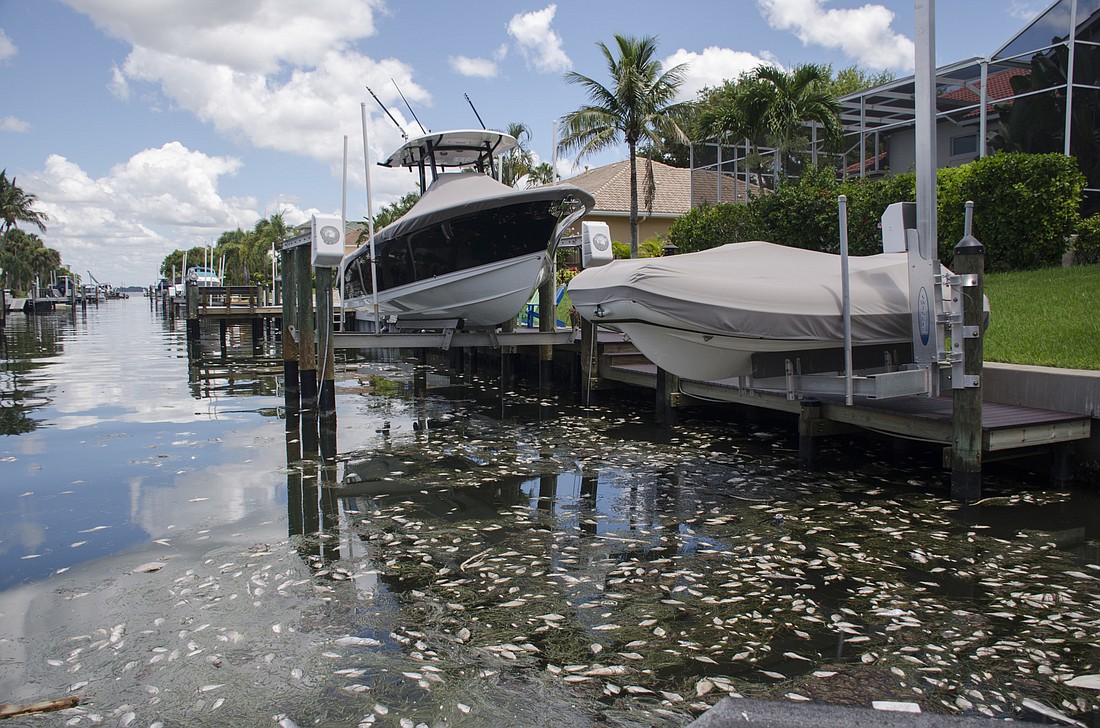- July 26, 2024
-
-
Loading

Loading

Myth: There is a season for red tide
There is a common misconception that red tide can be worse in the summer months. Vincent Lovko, a Mote Marine Laboratory scientist, has found it’s more prevalent in the cooler months. The 2018 bloom was rare, he said, in that it continued from winter to summer and into the next winter. Late summer and into early fall is the start of when scientists can see blooms, he said.
Myth: Humans cause red tide
These red tide events, which have been recorded since the 1800s, have been around long before humans started influencing the environment the way they do now, said Vincent Lovko, a Mote Marine Laboratory scientist. It’s tough, he said, to answer if humans are making blooms worse.
Florida red tide develops at least 10 miles offshore, and is therefore not caused by human actions, according to Florida Wildlife Conservation Commission research. Red tides occurred long before human settlement in Florida, with severe cases observed in the mid-1900s, before the coastlines were developed. However, as the red tide moves closer to the shore, it can grow with exposure to man-made nutrients.
Myth: Lake Okeechobee affected the bloom in 2018
“I would say that’s probably not true,” said Vincent Lovko, a Mote Marine Laboratory scientist. For starters, Lake Okeechobee is fresh water, and the Gulf of Mexico is salt water. The two aren’t compatible.
Florida Fish and Wildlife Conservation Commission research scientist Kate Hubbard said the FWC has been documenting red tide blooms since 1953, and in that time, there has been a significant red tide bloom every 10 to 15 years. Because the releases from Lake Okeechobee began after the bloom had already started, they had no direct effect on the initiation of the bloom.
“It’s possible they may have contributed to the overall nutrient pool,” Hubbard said. “But the bloom was happening before the releases started. In terms of the timing, there were a lot of different things going on.”
Myth: Red tide is actually red
It can be, but it isn’t always. As the discoloring of water comes from the wavelengths of light it absorbs and reflects, under certain circumstances, the water can look red, Mote Marine Laboratory scientist Vincent Lovko said. He added that sometimes, red tide can actually appear as green or black depending on density. Typically, the water appears murky.
Fact: Red tide can irritate asthma
Florida Department of Health scientific adviser Andy Reich said people in coastal areas may experience varying degrees of eye, nose and throat irritation because of a red tide bloom. Therefore, people with chronic respiratory conditions such as asthma are cautioned to avoid areas with red tides. Relief can usually be found when remaining in air-conditioned spaces and keeping car windows up, Reich said. Those without respiratory problems may find antihistamines relieve their symptoms.
Myth: I can’t take my pet outside during red tide
Pets can go outside during a red tide bloom, Florida Department of Health scientific adviser Andy Reich said, but, just like people, pets can be affected. Those with outdoor pets might want to consider bringing them inside just to be safe. If pets are taken to the beach, they should not be allowed to play with dead fish or sea foam that may have accumulated on the shore. If pets swim in the red tide, they should be washed with fresh water as soon as possible.
Myth: I can’t swim during a red tide
Swimming is safe for most people during a red tide, FWC research says. However, some may experience skin irritation and burning eyes. Those who are susceptible to plant product irritation should avoid swimming. If experiencing irritation, swimmers should thoroughly wash off with fresh water. Beach goers also should be careful not to swim among dead fish because they can carry harmful bacteria.
Myth: You can’t purchase shellfish from a local restaurant during red tide nor can you catch shellfish yourself
This is a two-part answer. Mote Marine Laboratory scientist Vincent Lovko said the shellfish industry is well-regulated, so restaurant offerings are safe to eat.
“I feel confident in saying they are safe to eat because they won’t be collected from a red tide area,” he said.
However, those harvesting shellfish recreationally, should be careful. Toxins can persist for weeks or months even after red tide is gone.
Additionally, according to research done by the Florida Department of Health, cooking or freezing sea life does not destroy the red tide toxin, so recreationally harvested mollusks should not be eaten during any closure of a shellfish harvesting area.